Though waxing is the oldest form of hair removal in the world, it is a method that is ever-evolving. Types of waxes and techniques are constantly changing. What doesn’t change, however, is the need for a speedy, relatively painless process for clients.
The demand for hair-free, smooth skin is as popular as ever. Options now include waxing, sugaring, threading, hair removal creams, IPL, and laser. Recent data indicates that waxing is still the most popular method of in-spa hair removal. As professionals and waxing specialists realize the continuing potential of hair removal, the industry is seeing the emergence of waxing bars or waxing-only salons.
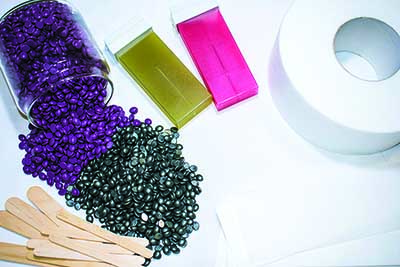 CLIENTS
CLIENTS
Ideal Clients
Professional salon waxing is an affordable and quality alternative to methods like shaving and IPL. While waxing is a great option for people of all ages and genders, getting clients started in their teenage years when hair is fine and less painful to remove is ideal.
The Benefits of Waxing Over Shaving
Not everyone is aware of the benefits of waxing. It is the professional’s role to help explain the advantages. Explain to clients that waxing removes hair from the root. Because shaving simply cuts the hair, there can be regrowth within just a couple of hours. Waxing can last up to four weeks and, over time, it thins the hair so less grows back. There is also the bonus that skin is left feeling silky and smooth due to the exfoliating effect.
Prepping Clients
Recommend that clients use an exfoliating scrub or mitt the day prior to waxing, but remind them not to apply any body lotion on the day of their wax. For underarms, clients should either not wear deodorant or use deodorant without antiperspirant because it is easier to remove in preparation for treatment.
If clients have recently shaved or are transitioning from shaving to waxing, wait five days from the last shave. Be sure to inform clients that waxing can be uncomfortable because the hair is being pulled out from the root, but, generally, discomfort is minimal and should subside immediately after treatment. It is important to remind clients to apply a high factor sun protection lotion before sun exposure, particularly for the first 24-hours post-wax.
ALL WAXES ARE NOT CREATED EQUALLY
Deciding which wax to use is a big decision. It is, after all, the most important tool in any waxing treatment. With a plethora of wax products on the market, making that decision can be overwhelming, but it does not need to be. Dr. Tiffany Goodie, Waxxxpress quality manager and chemist, says, “To make an informed decision, it is important to look at the core ingredient in hair removal waxes – resin. This ingredient is the basis of all strip and hard waxes, and generally the first ingredient you will see on a label. Usually we’re told natural is better, but when it comes to pine (tree) resin in waxes, unrefined resins can cause allergic reactions and irritation to clients, so it is something to look for on the label. In my experience, top-of-the-range, synthetic resins have proven to be superior and are more consistent in production from batch-to-batch. Additionally, high-quality synthetic resins are generally clear, making them easy to color to suit market demands.
The fragrance of a wax is also important in a salon setting. High quality synthetic resins are low-odor, requiring
only a small amount of added fragrance, if any. Low-quality resins often give off a tar or burnt plastic aroma, which, in turn, requires more fragrance to be added to hide the unpleasant odor.”
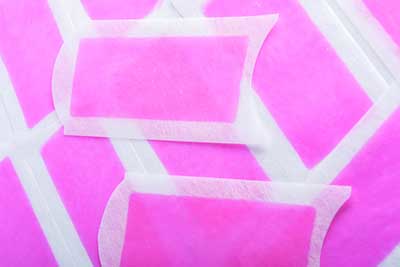
Goodie explains another key ingredient factor to consider in strip waxes is oil. “Oil helps stop the product from drying out and keeps it pliable. Most strip waxes include olive, canola, soya bean, or white oils. Or perhaps even a combination of these. The choice of oil additive is dependent upon the feel and color the wax manufacturer is seeking,” Goodie said.
Synthetic waxes have superior quality and are more pliable, making them better to work with. Higher quality can equate to a marginally higher price point, driving up overheads. However, wax is the most important tool of the trade and professionals should not choose price over quality. Paying that extra couple of dollars can make all the difference when it comes to securing repeat business and long-term clients. Using inferior wax could ultimately cost professionals a lifelong customer if the client experiences irritated skin and a sub-standard result.
If professionals want to evaluate their current wax, they should ask themselves the following questions: How effective is it? Does it grip the hairs effectively? Does it lift the skin? Does it burn the skin or cause redness and irritation? Does it cause ingrown hairs or pimples? What is the consistency? Is it stringy? How does it smell? Does it give off an odor of resin or chemicals? Is it highly perfumed? What does it look like? Is it dark or light in appearance? If yes is the answer to any of these questions, professionals should do some research and consider changing their wax.
Inferior waxes cause redness, irritation, and ingrown hairs. Furthermore, they do not maintain their temperature as well as top-quality waxes. Temperature control of waxes is an imperative consideration. If the wax is too cold, it will not glide on easily; it will be stringy and pull at the client’s skin. When wax is too hot, it will be uncomfortable for the client.
The ultimate waxing trolley should include both a hard and a strip wax. A creamy hard wax is ideal for facial and intimate areas while a clear strip wax is best for short and stubborn hairs.
Ultimately, the choice will come down to professionals knowing what works well for them. It is important for professionals to pinpoint the aspects they like and dislike in a wax. If professionals invest some time and careful consideration into their research, they will find the perfect wax to suit their needs.
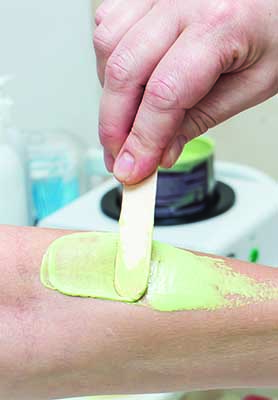 Talk to the wax manufacturer; they will help with product information and their websites can be a good source of information. When conducting product research, word-of-mouth, education sessions and wholesaler recommendations are useful, but professionals will need to do their own research and testing. Manufacturers are constantly innovating and improving formulations. Keep abreast of industry news, try new lines when they are released, and offer feedback to the manufacturer – they will appreciate it.
Talk to the wax manufacturer; they will help with product information and their websites can be a good source of information. When conducting product research, word-of-mouth, education sessions and wholesaler recommendations are useful, but professionals will need to do their own research and testing. Manufacturers are constantly innovating and improving formulations. Keep abreast of industry news, try new lines when they are released, and offer feedback to the manufacturer – they will appreciate it.
Look for a wax that is pliable, glides on easily with a wooden spatula, grips the hairs, is nourishing, has a subtle aroma, and, of course, performs its job of properly removing hair. Professionals should also be mindful that if they are using a superior wax with a good reputation and still experiencing difficulties, the problem may be their technique.
WAXING TECHNIQUE
Correct waxing technique is crucial to customer experience. Professionals can use the best wax in the world, but if they do not know how to use it or have a poor technique, the wax is not going to help them deliver the best results or experience for clients.
Incorrect waxing technique can damage a client’s skin, as well as cause unnecessary pain, skin lifting, and bruising. Waxing has a reputation for being painful, but with the right technique it does not have to be! That is not to say there is not any discomfort involved – after all, hairs are being removed from the root. However, waxing should not be described as painful or unbearable.
How do professionals know if their technique is good? Clients really are the best barometer. Do they come back? Do they give positive feedback? Do they refer their friends?
In this industry, word-of-mouth can be the biggest asset or biggest downfall. Clients are much more likely to tell their friends about a bad experience than a good one. If clients are not coming back or professionals are receiving negative feedback, then they just may need to invest in further training for themselves and their employees.
Another indication that the professional’s technique might need a little work is ingrown hairs. An ingrown hair is one that does not emerge from the follicle and remains embedded in the skin, usually causing inflammation. They generally occur after hair removal, when dead skin cells accumulate and form a papule as the skin heals. Hair growing in the area becomes trapped under the papule and is prevented from exiting the skin.

Some people are simply more prone to developing ingrown hairs than others, but, at times, waxing can result in broken hairs that can cause ingrowns. Poor waxing techniques can increase the number and severity of ingrown hairs experienced by clientele.
Speed waxing is a technique involving the application of wax to large areas at once. It may be faster, but it can cause hairs to break at the surface instead of being pulled from the root. It is better to work in smaller, more manageable sections to avoid causing unnecessary contraindications.
When treating more mature clients, always remember to ask if they have started on any new medications before each wax. A lot can change in four weeks and medication can play a factor in how a client’s skin reacts to treatment. Be particularly gentle, as their skin can become damaged or they may bruise more easily.
For pregnant clients, there are techniques and positions that should be implemented. Heavily pregnant women cannot lie flat on their back. They require extra support and professionals need to be able to maneuver them properly and comfortably.
Training is a great way to boost the spa team by improving morale and re-energizing employees. If they discover how easy performing wax treatments can be through training and development, they will learn to love it. The team will no longer view it as unglamorous or a chore. They will relish in providing great service.
The importance of attending regular refresher courses cannot be overstated. As the industry continues to evolve and innovate, it is important to keep up with current trends and remain at the forefront of the industry. There are plenty of refresher waxing courses and online training available, so it is easy to brush up. Make sure all training is from a qualified, reputable institution.
A combination of correct techniques and the right products will minimize side-effects and ensure the waxing treatment is an experience clients will return for.
TRICKS OF THE TRADE
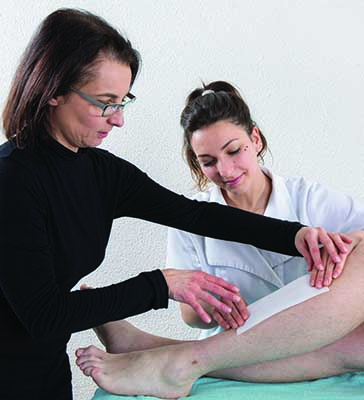 When it comes to maintaining a spa, there are so many things professionals need to get right to ensure efficiency and profitability. Work smarter, not harder! Smart decisions will help professionals save time on clean up and will ultimately save them money as well.
When it comes to maintaining a spa, there are so many things professionals need to get right to ensure efficiency and profitability. Work smarter, not harder! Smart decisions will help professionals save time on clean up and will ultimately save them money as well.
Quality Ancillaries
Many salons and spas are not using the latest ancillaries and disposables available because of cost factors or awareness. For example, some professionals still use calico strips and take time to cut them to size because they think they are saving money. Pre-cut strips in the perfect size are not any more expensive factoring in how long it takes to cut them up. If the strip has wax seeping through to the other side, it needs to be thrown out sooner. Professionals should be able to do a half leg wax with just three strips if they use the strip to its entirety.
If a glove tears, professionals need a fresh one. If their spatulas split, they will go through them sooner. In each of these instances, disposable tools are costing time and money. Cheaply-priced products are also cheap quality and end up costing more in the long run. This principle applies to cleaning ancillaries too. Professionals need a good-quality cleaning solution that requires very little physical exertion and gets the job done quickly. Some brands of post-wax oil effectively remove residual wax from the body and any drips from the bed. In order to save money, professionals should find multiple uses for one product. For example, use the back of a used wax strip as a cleaning tool to remove wax residue from the client’s body or the waxing station. Simply fold the strip in on itself and spray the back with an after-wax oil or citrus cleaner. Something that was going straight into the trash has doubled up as a cleaning tool. However, this does require a good quality strip.
Waxing Station Setup
A good waxing trolley and room setup can make a difference to both professionals and clients. Ensuring the room and trolley are laid out logically with everything the professional needs during a treatment will make life so much easier. A trolley on wheels is a must. Waxing rooms are often small, so simply push the treatment bed against the wall. If there is enough room to walk beside the bed and comfortably move the trolley around, that is all the professional needs. The trolley should be set up with pre- and post-products hanging from the side and hard and strip wax pots at the front. There is no need to reach over products to get to the wax. This only makes for more clean up after each client.
Temperature-Controlled Pots
Keep wax pots turned on throughout the day, even if there are no client bookings. Professionals often turn their pots off, which means they could miss the opportunity of servicing walk-in clients or lose precious time waiting for wax to heat up.
Using a timer is the easiest way to ensure wax pots automatically turn themselves on, which can save at least 30-minutes at the start of each day. The professional will also save themselves the panic of wondering whether their pots were turned off at the end of the day. Be sure to top-up the wax pot after each client.
Having two separate wax heaters is also vital for salons that are serious about waxing. Double wax heaters are connected by one thermostat, so even with two temperature dials, when professionals change one side, the other side will also be affected. One side could be too hot while the other side is too cold; the professional will constantly be fiddling with the dial trying to get it right. If one of the thermostats break, the whole heater is obsolete! Look for single heaters that have the option of a hard and strip wax setup.
The microwave-to-pot concept is also fantastic. Eliminating metal tins, microwavable hard and strip wax formulas have been developed specifically to be warmed in the microwave and then placed directly into wax pots designed to hold microwavable wax jars; this ensures no pouring, no mess, and no fuss. This can save time and eliminate cleaning.
Waxing Hygiene
Professionals should ensure they have appropriate sterilization procedures in place. For example, there should be no double-dipping! This practice contaminates wax and allows bacteria to spread from one client to another. Nobody wants the wax used on their upper lip to have been mixed with a stick used on another client’s bikini area.
RETAIL AND ADD-ONS
Many professionals love the client service side of their role, but do not really enjoy the retail aspects. Upselling retail products can be challenging, especially when the client is already handing over money for their treatment.
Retail products can have a higher profit margin than most salon services, helping to increase the bottom-line. Therefore, retail is a very important part of any salon or spa.
Keep retail lines simple. Professionals should be specific about what they stock. Find products that will help clients at an affordable price point. If the professional is offering a solution to a problem, their clients will be grateful (rather than annoyed) that the professional recommended a product to help them.
Ingrown hair treatments are the perfect retail add-on to any wax treatment. An ingrown hair concentrated serum is a great after-wax product to recommend, as natural fruit acids soothe irritated skin and help prevent ingrown hairs from occurring. A targeted ingrown hair spot solution is ideal for healing ingrown hairs quickly and can rapidly draw out the infection present in pimples.
Safe, effective, and attainable waxing continues to have a prominent place in the beauty industry. So, become an expert, and make sure clients know their practitioner is the best in the business!
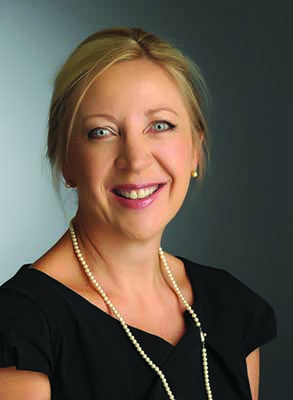 Lilliane Caron is the founder and director of Waxxxpress USA. Known worldwide for her waxing techniques, she is dedicated to helping create better salons by delivering superior products, exceptional service, and industry-leading education. In her untiring quest to make beauty therapists’ jobs easier, Caron continues to devote herself to salon innovation. Her success is attributed to a high standard of customer service, training, and customer support. Therapists can deliver every treatment in confidence knowing that Waxxxpress products care for the health, comfort, and well-being of their clients as they indulge in their salon treatment.
Lilliane Caron is the founder and director of Waxxxpress USA. Known worldwide for her waxing techniques, she is dedicated to helping create better salons by delivering superior products, exceptional service, and industry-leading education. In her untiring quest to make beauty therapists’ jobs easier, Caron continues to devote herself to salon innovation. Her success is attributed to a high standard of customer service, training, and customer support. Therapists can deliver every treatment in confidence knowing that Waxxxpress products care for the health, comfort, and well-being of their clients as they indulge in their salon treatment.